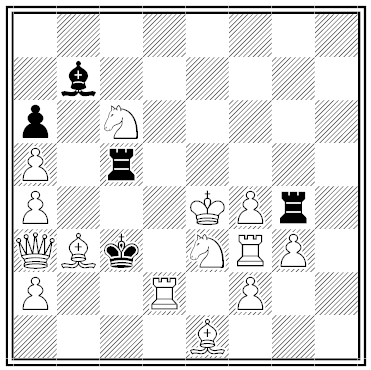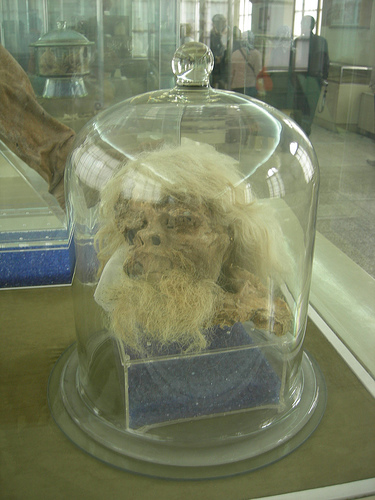
In this position, composed by Harold Holgate Cross, White has 29 legal moves. What do they all have in common?

In this position, composed by Harold Holgate Cross, White has 29 legal moves. What do they all have in common?
agrexophrenia
n. inability to perform sexually due to fear of being overheard
32 + 42 = 52
212 + 222 + 232 + 242 = 252 + 262 + 272

The Confederate navy had a working submarine during the Civil War. Powered by a hand crank, the 40-foot H.L. Hunley managed to sink an 1,800-ton sloop-of-war in Charleston harbor in 1864, a historic first, but then herself sank.
Little is known about the sub’s crew, but one story held that the commander, Lt. George E. Dixon, had survived the Battle of Shiloh because a Union bullet struck a coin in his pocket. His sweetheart, it was said, had given him the coin “for protection.” This was considered a family legend until 2002, when a forensic anthropologist investigating the Hunley‘s remains discovered a healed injury to Dixon’s hip bone.
Near Dixon’s station another researcher found a misshapen $20 gold piece, minted in 1860, with this inscription:
Shiloh
April 6 1862
My life Preserver
G. E. D.

One may see in the shop-windows of a Fourth avenue confectioner, ‘Pies Open All Night.’ An undertaker in the same thoroughfare advertises, ‘Everything Requisite for a First-class Funeral.’ A Bowery placard reads, ‘Home-made Dining Rooms, Family Oysters.’ A West Broadway restaurateur sells ‘Home-made Pies, Pastry and Oysters.’ A Third avenue ‘dive’ offers for sale ‘Coffee and Cakes off the Griddle,’ and an East Broadway caterer retails ‘Fresh Salt Oysters’ and ‘Larger Beer.’ A Fulton street tobacconist calls himself a ‘Speculator in Smoke,’ and a purveyor of summer drinks has invented a new draught, which he calls by the colicky name of ‘Aeolian Spray.’ A Sixth avenue barber hangs out a sign reading ‘Boots Polished Inside,’ and on Varick street, near Carmine, there are ‘Lessons Given on the Piano, with use for Practice.’ ‘Cloth Cutt and Bastd’ is the cabalistic legend on the front of a millinery shop on Spring street; on another street the following catches the eye: ‘Washin Ironin and Goin Out by the Day Done Here.’
— Frank H. Stauffer, The Queer, the Quaint and the Quizzical, 1882

In winter 1993 workers in a salt mine in western Iran uncovered the body of a man with long hair and a beard. He had been buried in the middle of a 45-meter tunnel.
Carbon dating showed he had been lying there for 1700 years. It appears he was of high rank and had been struck in the head, but no one knows who he was or how he came to be there.
See also Bog Bodies.
The first LSD trip took place on April 19, 1943, when Swiss chemist Albert Hofmann ingested 250 micrograms and tried to go home:
I had to struggle to speak intelligibly. I asked my laboratory assistant, who was informed of the self-experiment, to escort me home. We went by bicycle, no automobile being available because of wartime restrictions on their use. On the way home, my condition began to assume threatening forms. Everything in my field of vision wavered and was distorted as if seen in a curved mirror. I also had the sensation of being unable to move from the spot. Nevertheless, my assistant later told me we had traveled very rapidly.
It’s remembered as “Bicycle Day.”
“I saw a sign in a hardware store to-day ‘Cast iron sinks.’ As though everyone wasn’t wise to that.”
— The New Pun Book, 1906

The world’s longest-lived light bulb is in a fire station in Livermore, Calif.
It’s been burning continuously since 1901.
“There is no worse robber than a bad book.” — Italian saying